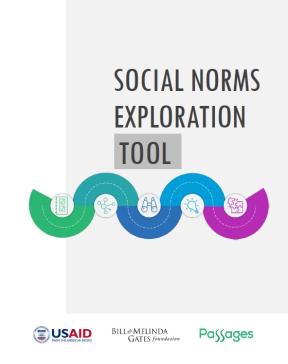
Tools for identifying (diagnosing) social and gender norms
Tools for understanding what norms are present in a particular context, and how they affect a particular issue, draw on social norms theory. These tools aim help users understand:
- descriptive norms or empirical expectations (beliefs about what most people do in a given locality);
- injunctive norms or normative expectations (beliefs about what most people think is appropriate behaviour);
- the key reference groups who influence particular norms;
- the strength of a particular norm;
- the sanctions for violating a norm; and
- personal beliefs and attitudes, as distinct from norms.
Two widely used tools are the Social Norms Analysis Plot (SNAP) developed by CARE and the Social Norms Exploration Tool (SNET) developed by the Learning Collaborative.
The SNET outlines a set of steps and a menu of tools that can be used to find out which norms are dominant and why, and for analysing data collected.
The SNAP provides a framework for distinguishing different types of norms, and sanctions.
The Learning Collaborative’s Overview of Experiences Diagnosing Social Norms curates a number of other tools and approaches that have been used by both projects and in research to identify social and gender norms.
ALIGN’s qualitative and quantitative data and tools sections (coming soon) outline tools that can be used to collect and analyse data using these frameworks.



